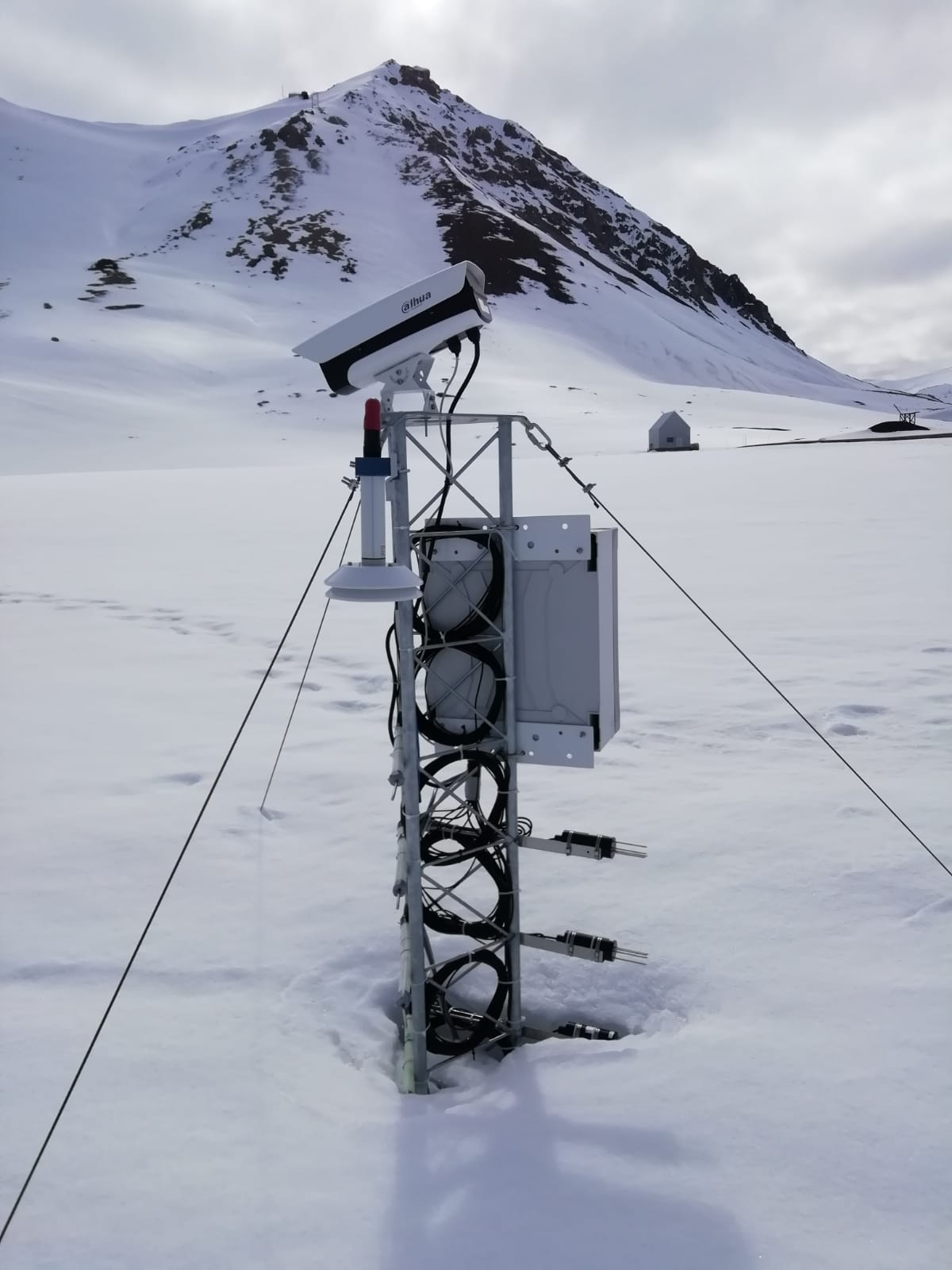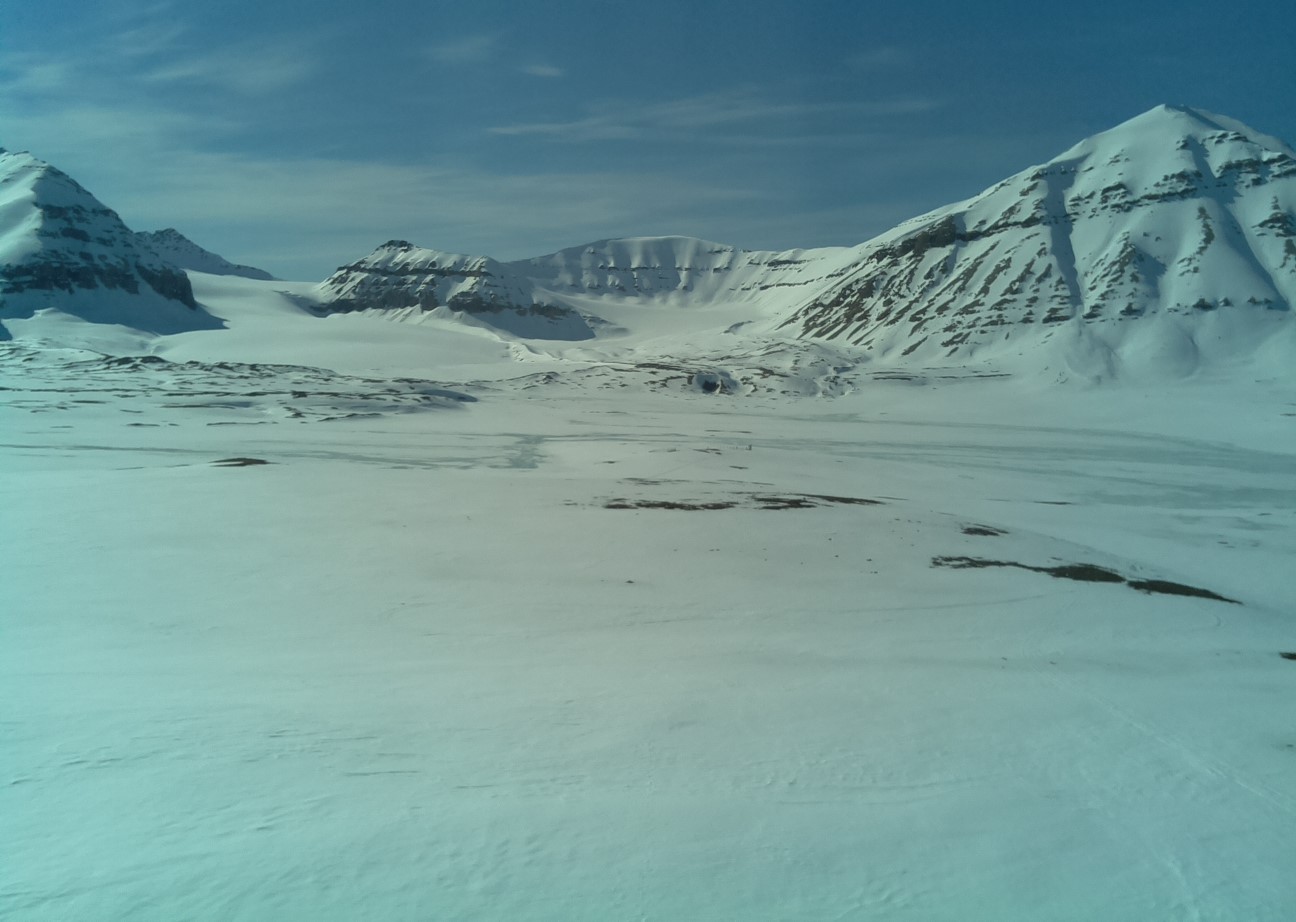Type of resources
Available actions
IADC Research Activities
Topics
Keywords
Contact for the resource
Provided by
Years
Formats
Representation types
Update frequencies
status
Scale
-

Time series of marine particles fluxes and its compositions (Time and spatial scale: 15-90 days, fixed depth 83 m, 17 m above bottom). Flux of total mass, TMF, (g m-2 day-1) - Organic Carbon, OC, (per cent) - Calcium carbonate,CaCO3, (per cent) - Biogenic silica, Opal, (per cent) - Lithogenic material, Litho, (per cent) - Delta 13C, d13C, (per mil)
-

The automated nivological station was installed in November 2020 in a flat area over the tundra about 80 meters far from the Gruvebadet Atmospheric Laboratory and nearby a snow sampling site from where weekly snow samples are collected for chemical analysis. Sensors (Pt100 1/3 DIN) have been calibrated by their companies before installation and are connected to a datalogger for continuous acquisition. For all the parameters, data are logged with 10-minute time resolution and then averaged over 1 hour. This activity is carried out by the Aldo Pontremoli Centre part of the Joint Research Agreement ENI-CNR, in the framework of the SnowCorD project (SIOS Core Data).
-
temperature, electrical conductivity, hydrometric level measured in piezometers located near CCT (Ny-Alesund)
-

Monitoring of Aerosol: Short and Long range source areas related to Climate Change (MAShLoCC) During the Arctic campaign 2010, an atmospheric aerosol sampling at the Gruvebadet observatory has been carried out in order to obtain information about the formation and composition of atmospheric aerosol, transport processes toward the Arctic zone as well as local and remote source areas. Instrument : ICP-SFMS, IRMS, Orbitrap
-

The Italian project CASSANDRA is part of the international framework of the Synoptic Arctic Survey which seeks to collect oceanographic data in the Arctic Ocean in the two-year period 2020-2021 involving the coordination of many research vessels belonging to different nations. The aim is to determine the current state and major ongoing changes in the Arctic marine system by generating an oceanographic dataset that allows for a comprehensive characterization of Arctic hydrography and circulation, carbon uptake and ocean acidification, the distribution of possible pollutants, the functioning and productivity of organisms and ecosystems.
-

pH tipping point in Svalbard (pHinS) The project is focused on carbonate chemistry in the fjord and measure how meltwater, icebergs and freshwater runoff affects the acidity of coastal seawater. Acquisition of CTD profiles and seawater samples at discrete depths (surface, bottom and 1-3 intermediate depths) to determine pH, total alkalinity, dissolved inorganic carbon, dissolved oxygen, nutrients, dissolved organic carbon. Collection of samples from icebergs and streams to determine the same set of parameters measured in the seawater. Some of the analysis were performed in the laboratory of the “Dirigibile Italia” Arctic station soon after the collection; others will be performed on preserved samples in ISMAR’s laboratories. 62 water column profiles of pressure, Temperature, salinity, dissolved oxygen, turbidity instrument: SBE19plus
-

Climate-Cryosphere-Carbon interactions in Kongsfjorden, Svalbard (C3) Use sediment cores as archives of climate-induced destabilizations in the fjord. By targeting well known past climate changes (MWP and LIA) we will understand how the C3 system varied during natural warming and cooling events. Retrieve of two sediment cores in Kongsfjorden, in summer 2017, to encompass the last 1k years.
-

terrestrial Photography ApplicationS on Snow covEr in Svalbard Project start: 2018-04-15 - end: 2021-12-31 The purpose of this activity is the development of a new snow product focused on the estimation of the fraction of snow cover in selected sites at different spatial resolutions. This dataset will be aimed to support the estimation of cryospheric information using remotely sensed data, with a particular attention to data obtained in the framework of the Copernicus program. The availability of this dataset in a natural laboratory such as Svalbard islands will support the reduction of the gap between remotely sensed data and modeling activities. This added value will be very important considering the higher spatial resolution of the sensors recently deployed. The dataset will be based on re-using data obtained from public repositories such as the digital elevation model of Svalbard, the available webcam imageries in Svalbard and satellite products from Landsat, Sentinel and MODIS missions. All the available data will be integrated in order to estimate the fraction of snow cover, at different spatial resolutions, for each satellite mission. These estimations, computed at different sites in Svalbard islands, will offer the opportunity to better integrate results obtained by remote sensing with modeling and air-snow interactions studies. Particular attention will be devoted to the formalization of agreements with raw-data providers in case of not-public licensing policies.
-
Mixing state and organic volume fractions of sub micron aerosol particles collected at the Zeppelin observatory
-

Arctic Metrology (MeteoMet - Arcitc) Project start:2017-03-01 end: 2022-02-01 Field calibration of thermometers for air, soil, permafrost and water temperature measurements using special transportable chamber and dedicated calibration procedures. Evaluation of field measurement uncertainty. Calibration of different kind of instruments and sensors. Dedicated calibration procedures. Documented traceability to SI standards. Field measurement uncertainty evaluations.